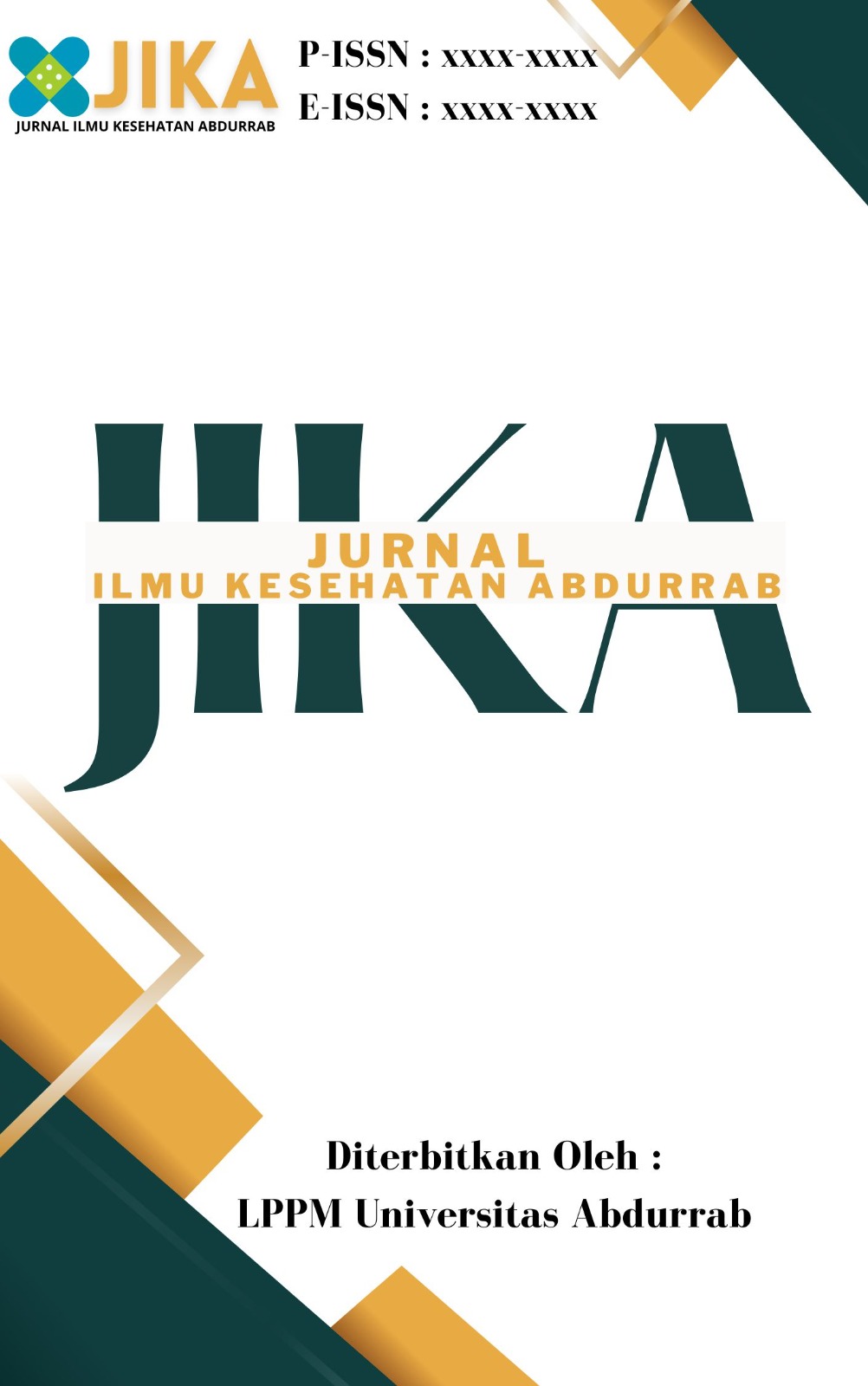Toxicity Test of 96% Ethanol Extract of Mahkota Dewa Leaves (Phaleria Macrocarpa) using the Brine Shrimp Lethality Test Method
Keywords:
Phaleria macrocarpa, Acute Toxicity Test, Artemia salina Leach, LC50.Abstract
Mahkota dewa (Phaleria macrocarpa) is a plant from the Thymelaeceae family. This plant contains several active compounds such as alkaloids, flavonoids, steroids, saponins, and tannins, so it has potential as a herbal medicine in Indonesia. This study aims to determine the toxicity of the leaves of the god crown using the Brine Shrimp Lethality Test (BSLT) method. Extraction of the god crown leaves using 96% ethanol solvent with the maceration method was then carried out a phytochemical screening which showed that the sample of the crown god leaf contained alkaloids, flavonoids, steroids, saponins and tannins. Toxicity testing of the ethanol extract of Mahkota Dewa leaves on Artemia salina Leach larvae was divided into 5 test groups, namely 4 treatment groups (concentrations of 250 ppm, 500 ppm, 750 ppm, and 1000 ppm) and 1 control or comparison group (seawater). Each concentration was made in 3 vials including 10 Artemia salina Leach larvae. Observations were made by looking at the death of Artemia salina Leach larvae after 24 hours of treatment. The research results can be seen through probit analysis by calculating the LC50 value. The LC50 value of the ethanol extract of Mahkota Dewa leaves was 7,7090 /mL. This shows that the ethanol extract of Mahkota Dewa leaves has a toxic effect on Artemia salina Leach larvae because the LC50 value is <1000 ppm.
Downloads
Downloads
Published
How to Cite
Issue
Section
License
Please find the rights and licenses in Jurnal Ilmu Kesehatan Abdurrab. By submitting the article/manuscript of the article, the author(s) accept this policy.
1. License
The non-commercial use of the article will be governed by the Creative Commons Attribution license as currently displayed on Creative Commons Attribution-NonCommercial-ShareAlike 4.0 International License.
2. Author’s Warranties
The author warrants that the article is original, written by stated author(s), has not been published before, contains no unlawful statements, does not infringe the rights of others, is subject to copyright that is vested exclusively in the author and free of any third party rights, and that any necessary written permissions to quote from other sources have been obtained by the author(s).
3. User Rights
Jurnal Ilmu Kesehatan Abdurrab spirit is to disseminate articles published are as free as possible. Under the Creative Commons license, Jurnal Ilmu Kesehatan Abdurrab permits users to copy, distribute, display, and perform the work for non-commercial purposes only. Users will also need to attribute authors and Jurnal Ilmu Kesehatan Abdurrab on distributing works in the journal.
4. Rights of Authors
Authors retain all their rights to the published works, such as (but not limited to) the following rights;
- Copyright and other proprietary rights relating to the article, such as patent rights,
- The right to use the substance of the article in own future works, including lectures and books,
- The right to reproduce the article for own purposes,
- The right to self-archive the article,
- The right to enter into separate, additional contractual arrangements for the non-exclusive distribution of the article's published version (e.g., post it to an institutional repository or publish it in a book), with an acknowledgment of its initial publication in this journal (Jurnal Ilmu Kesehatan Abdurrab).
5. Co-Authorship
If the article was jointly prepared by other authors, any authors submitting the manuscript warrants that he/she has been authorized by all co-authors to be agreed on this copyright and license notice (agreement) on their behalf, and agrees to inform his/her co-authors of the terms of this policy. Jurnal Ilmu Kesehatan Abdurrab will not be held liable for anything that may arise due to the author(s) internal dispute. Jurnal Ilmu Kesehatan Abdurrab will only communicate with the corresponding author.
6. Royalties
This agreement entitles the author to no royalties or other fees. To such extent as legally permissible, the author waives his or her right to collect royalties relative to the article in respect of any use of the article by Jurnal Ilmu Kesehatan Abdurrab.
7. Miscellaneous
Jurnal Ilmu Kesehatan Abdurrab will publish the article (or have it published) in the journal if the article’s editorial process is successfully completed. Jurnal Ilmu Kesehatan Abdurrab's editors may modify the article to a style of punctuation, spelling, capitalization, referencing and usage that deems appropriate. The author acknowledges that the article may be published so that it will be publicly accessible and such access will be free of charge for the readers as mentioned in point 3.







